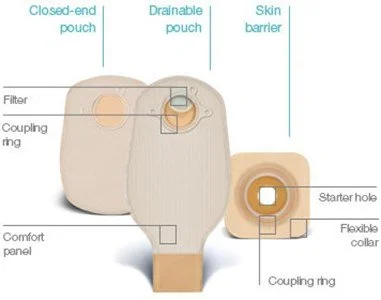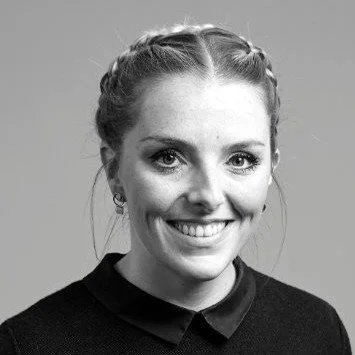Medical Representation in the World of LEGO Friends
/Friends is a theme that is usually not on my radar, save for sets like the Downtown Flower and Design Stores (which I picked up for the parts), the new Cafe, and the Community Kitchen. All of which would serve very well in City layouts and MOCs.
As much as I like many of the offerings from Friends, I’ve never been one for mini dolls. By no means am I the target demographic for the figures. Leave me to my undercover cops and magazine mascots. With that said, there’s one mini doll that has made its way near the top of my list of favorite LEGO figures for one very important reason: representation.
This minidoll is Sara, and she has an ostomy bag. This one detail is a big deal to me, and will be for ostomates and people with other bladder and bowel conditions. What’s an ostomate? What is the history of representation of medical conditions in LEGO, and why is it important? And what impact has this one mini doll had on people in the ostomate community?
A Survey of Bladder and Bowel Conditions and their Treatments
Defining the swath of conditions and syndromes that Sara represents is no easy task. The easiest place to start would be with the condition I was born with: cloacal exstrophy. Cloacal exstrophy (CE), which falls under OEIS complex (omphalocele-exstrophy-imperforate anus-spinal defects) is a complicated and extremely rare congenital birth defect that occurs in utero in roughly 1 in 250,000 births.
CE occurs when a portion of the large intestine, including the colon, lies outside of the body and often split in half. The severity of the condition varies greatly at birth, as do the treatments for it. One of the most common treatments for CE is the development of a colostomy: an opening for the colon through the abdomen. BrickNerd readers who are medically curious are more than welcome to seek these terms and definitions out for yourselves, but be warned, many of the images and write-ups that come with them are not for the squeamish.
An example of one of many ostomy systems - Source: Convatec
The need for a colostomy or one of the other kinds of ostomies (ileostomy and urostomy) is not reserved for just patients with OEIS, as bladder and bowel conditions are many and distinct. For example, patients with Crohn’s disease or bowel and colon cancer may need an ostomy of some kind in response to the removal or modification of the gastroenterological system.
Suffice to say, the need for an ostomy is not confined to just one or two conditions. Sara’s having an ostomy system of any kind does a lot to represent a large number of kids and other fans of LEGO who have lived with any of the conditions presented.
Before Sara’s creation, what was medical representation like in the LEGO world?
You Can’t Have a City Without a Hospital
With only 20-30 sets I’d even consider as falling into the category of “hospital/medical center” in the last 50 years, medical representation is lacking in the world of LEGO, especially compared to other Town/City-centric subthemes like Fire and Police, both of which receive new waves just about every year. And I’d go so far as to say that before 2017, what has been offered to roleplay scenarios in the medical field hasn’t changed all that much since the original Hospital in 1975.
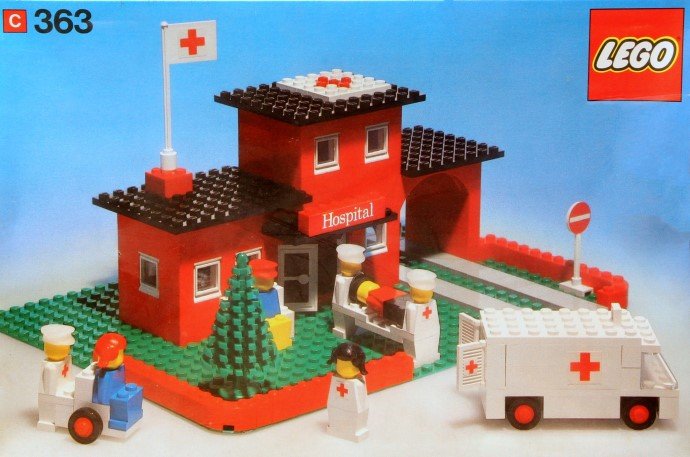
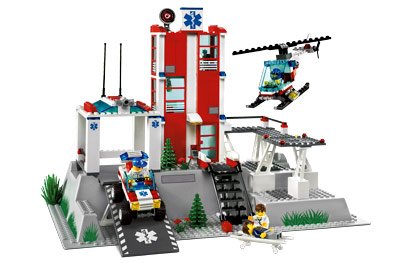
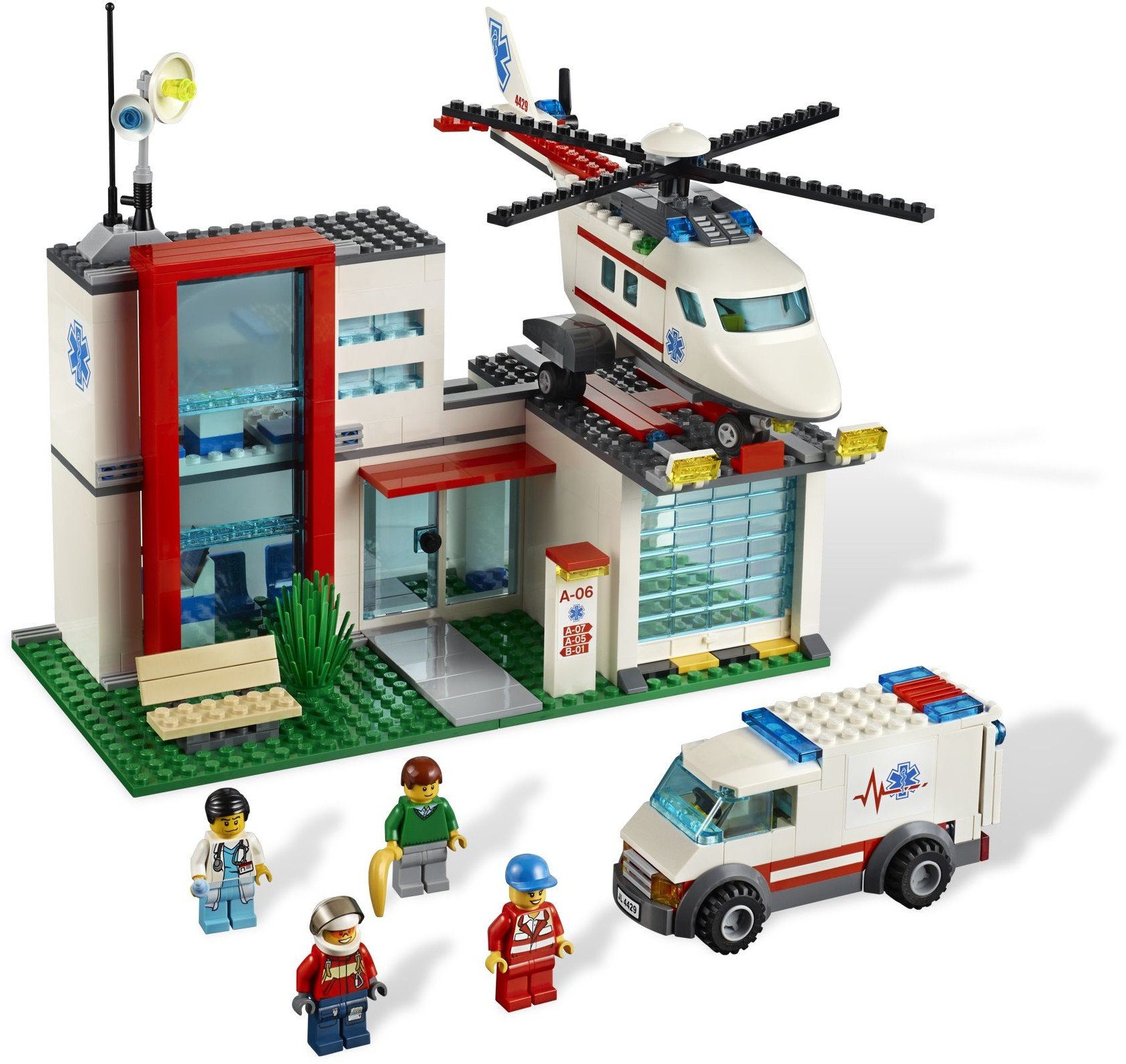
Most LEGO hospitals - whether they’re from Town, City or Friends - have at least one of the following spaces for play: a waiting room, a triage room including x-rays and scales of some sort, a recovery room, and either an operating room or maternity ward; and these spaces for play don’t include the many garages for ambulances or helicopter landing pads that are almost guaranteed to appear in a hospital set.
7892, with its very limited interior space and ridiculous parts usage for medical tools in the operating room, is a contender for one of the worst hospitals The LEGO Group has produced. 4429 Helicopter Rescue, the other contender for the worst hospital set, suffers from the same issues as its predecessor with only two very small rooms with minimal interior space or details to play in.
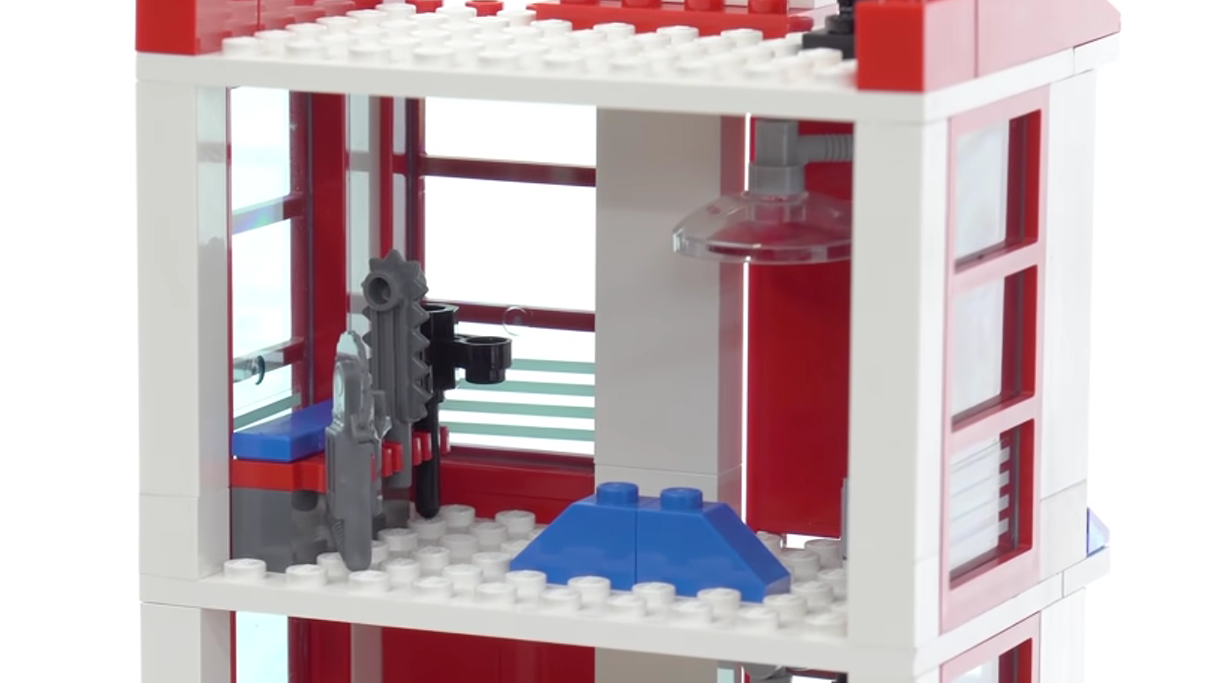
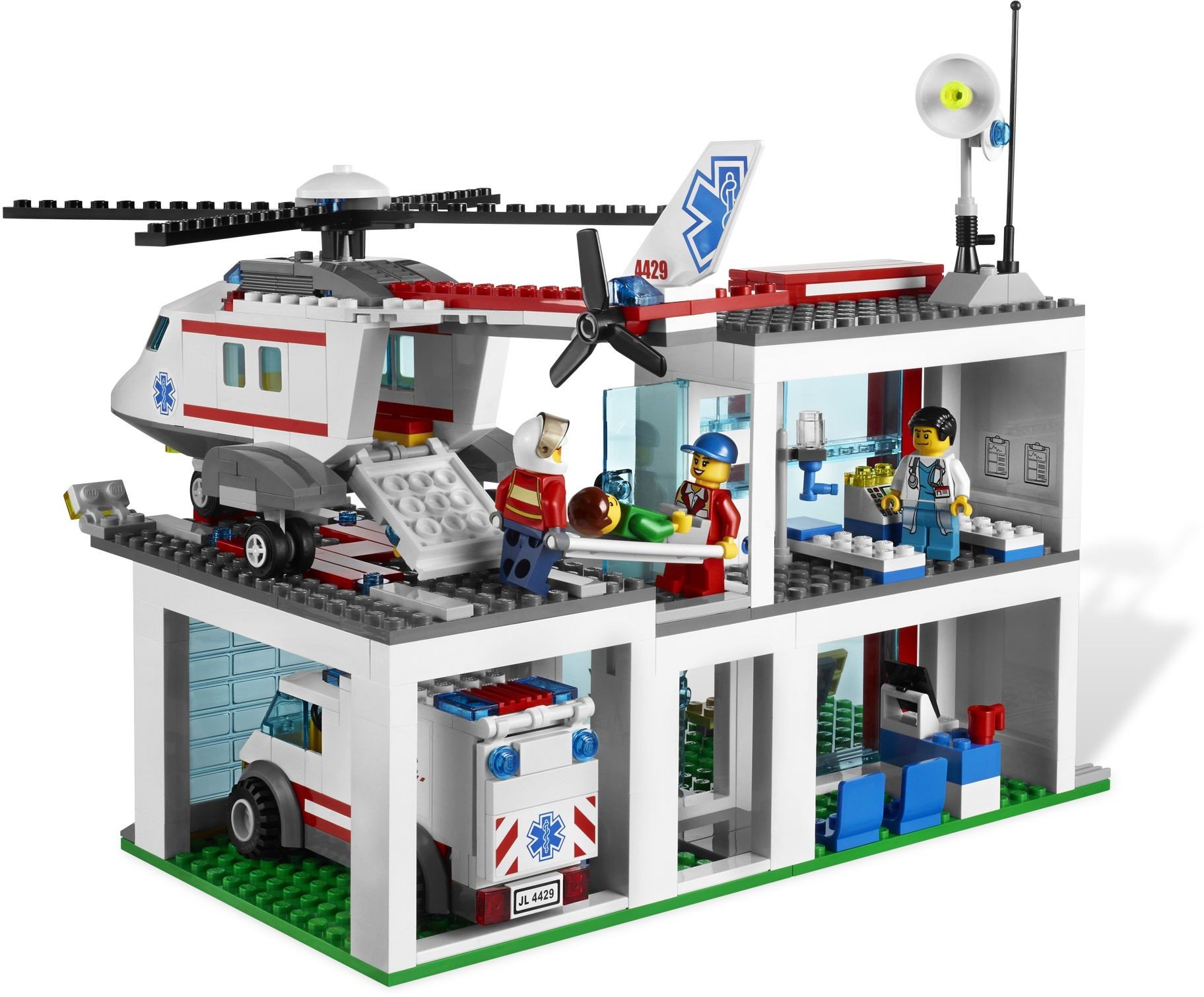
LEGO hospitals after Helicopter Rescue have done a pretty good job of providing kids with a rather comprehensive selection of rooms to create their own scenarios. The 2018 hospital from City and this year’s Heartlake City Hospital are both standout examples, providing numerous and varied rooms for play, better replicating the multifaceted and extensive work and wards of modern medical centers.
Source: Brickset
I’d also like to highlight 4000041: LEGO MRI Scanner which recreates a modern MRI device very well and in a scale quite accurate to its real life counterpart. The MRI Scanner, much like modern hospital sets, does a lot to expand the representation of real hospital life and equipment used daily in many procedures.
Source: The LEGO Group
The MRI Scanner is seemingly impossible to acquire, as only 600 were produced and shipped to hospitals globally to help kids face their fears and uncertainties about MRI procedures. The hospital can be a scary place for a kid (I should know) so efforts like this from The LEGO Group can go a long way in helping young patients confront the bizarre and sometimes foreign world of a medical center or hospital. It’s certainly better than using industrial power tools as stand-ins for surgical devices in 7892.
Good Friends, Different Together
What about The LEGO Group’s representation of medical conditions? How does that fare?
A write-up on disability representation in LEGO has been done here at BrickNerd that does a great job of highlighting all of the recent efforts by The LEGO Group to provide kids with differently-abled minifigures and mini dolls - I’d highly recommend checking it out.
While there have been major leaps in progress when it comes to representing differently-abled individuals in LEGO, there hasn’t been a minifigure or mini doll who represents such a niche congenital condition, - save for Autumn. Nor has there been a figure whose design suggests extensive medical procedures and operations - except for Anakin Skywalker I guess - which is why Sara as a character is such a huge deal.
Let’s Actually Talk About Sara
After talking around this figure and its importance, let’s look at Sara and the set she appears in.
The Heartlake City Water Park was not the standout set of the summer 2024 wave of sets. Based on discourse across forums and reviews on YouTube, that honor would go to the Castle Bed and Breakfast. Given the dearth of discussion around the set, there’s next to no conversation about Sara or ostomate representation.
In my research about the Water Park and Sara, I was able to speak with Fenella Charity, Creative Lead and Design Director for the LEGO Friends line, who was able to share with me some of the thought process behind designing and including Sara, as well as some previously unknown information about Sara’s role in the Friends universe.
Fenella Charity, Design Director at The LEGO Group
Fenella: Since the relaunch of LEGO Friends in 2023 we have been focussed on representing the real world. Sara is a character that came about due to our wish to represent all kinds of people in the world. When we were designing a water park she felt like a perfect fit as her character is someone who made sense to feature with the other characters in the set. Once we knew we wanted to design her to have an ileostomy bag we knew we should get the design process started with the experts and consultants that would make that representation authentic. She [Sara] is a friend of Leo’s mom, and co-worker of Aliya’s mom. She is known as Auntie Sara by some of the kids.
Sara’s figure probably would not exist outside of its set or one similar to it. It’s almost impossible to tell if someone is an ostomate since ostomy bags are hidden by the clothes we wear daily. Only in the context of the beach, a pool, or in this case a water park, would an ostomy bag be noticeable should the patient choose to wear merely swim trunks or a two-piece swimsuit as in the case of Sara in this set.
Sara’s ostomy, now known to be specifically an ileostomy, is printed rather high, right where the stomach would be - a placement common for ostomates - and a large scar running down her abdomen. These details, while simple, help to highlight the effects that treatments for bowel and bladder conditions can have on the body and goes a long way to accurately represent ostomates.
Fenella: When developing LEGO Friends, we understand that children want the characters they encounter to be more like the diverse personalities they meet in real-life. Our aim is that children see the new LEGO Friends universe as a reflection of their own friendships and to see the characters as authentic. When developing our products and universe, we aim to be inclusive of different cultures, ethnicities, physical traits and abilities, and non-visible disabilities such as neurodivergence.
Source: The LEGO Group
In the case of Sara, we produced a brief to develop a character with an ostomy bag. When we developed her, we worked closely with our Design Governance team and a consultant with lived experience who is also an active member of the ostomy bag community. In collaboration with our consultant, we designed the character aiming for accuracy in the details and the context. Hence, the idea of including the character in a water park setting emerged. This decision aims to connect with the real experiences of individuals living with an ostomy bag and those who know someone who does.
This is the same process we go through in developing all of our characters. For example when developing Autumn who was born with a limb difference we worked together with an expert consultant who had a limb difference herself. When we design these characters, it’s important that all the details are considered and represented in the most authentic way we can.
The Impact of Sara: Testimonial from an Ostomate
A lot of care and thought was put into the development of Sara, and the impact of the representation Sara provides has been greatly felt in online circles for ostomates and patients with other bladder and bowel conditions. Beyond my own appreciation and excitement for this kind of representation, I was able to speak with another ostomate - Becca - about her experience discovering Sara and the wonderful customer service of The LEGO Group that helped her acquire this mini doll.
Becca, fellow ostomate
Henry: How best would you briefly describe your condition?
Becca: I was born with VACTERL and an imperforate anus. Both these conditions affect me in many ways but a primary thing it affects is my bowels. I am a new ostomate, and have a continent ileostomy (Kock pouch) for management of these conditions.
Henry: What is your experience with LEGO?
Becca: My brother loved LEGO when I was younger which got me into liking it as well, and now that I’m older I still enjoy building an occasional set here or there!
Henry: How did you find out about Sara and how did you come to acquire the figure?
Becca: I found out about Sara through a Facebook post from a friend in the Ostomy community. I came to acquire Sara through my amazing mom and super thoughtful LEGO customer service! After finding out about the character I immediately sent the link to the set she’s in to my mom. Unbeknownst to me, my mom started looking into purchasing the character for me on the website.
It turns out this is not a character LEGO sells separately, so my mom reached out to their customer service to see if it was something she could purchase individually. They responded back saying they do not sell Sara by herself but wanted to send it to me for free in hopes to make me smile and aid in my recovery from my recent ostomy placement surgery! It was super thoughtful of them and I’ve seriously never had such an amazing interaction with customer service.
Henry: What is the most exciting thing about this character [Sara]?
Becca: I think the most exciting part is the representation this character [Sara] brings the ostomy community. A lot of times ostomates aren’t really depicted in the media, and when they are it’s older people, so it’s super refreshing to see a young person with an ostomy. I hope this character can help to normalize having an ostomy in general, but also more specifically that anyone can have an ostomy at any age.
Conclusion
Representation matters. It provides a way for audiences to connect with fictional worlds in a closer, more meaningful way. I never thought that I would see any kind of ostomate representation in any of the hobbies and media I’m interested in, nor did I think I ever needed to see it. However, that tune has definitely changed. It can not be said enough how amazing it is to see ostomates represented by The LEGO Group through Sara.
With the online web series LEGO Friends: The Next Chapter, I hope to see an episode with Sara featured alongside the key cast of the show in some capacity in the current season, or the season to come. Highlighting Sara in animation would help to bring further awareness to The LEGO Group’s consumer base and target audience.
For now, I can sit back, look at my collection, and see Sara standing amongst characters like Chase McCain and Max as one of my favorite figures that The LEGO Group has ever produced.
Best of BrickNerd - Article originally published October 10, 2024.
What do you think of The LEGO Group’s hospital sets? Have you picked up the Heartlake City Water Park? Leave your thoughts in the comments below!
Do you want to help BrickNerd continue publishing articles like this one? Become a top patron like Marc & Liz Puleo, Paige Mueller, Rob Klingberg from Brickstuff, John & Joshua Hanlon from Beyond the Brick, Megan Lum, Andy Price, Lukas Kurth from StoneWars, Wayne Tyler, Dan Church, and Roxanne Baxter to show your support, get early access, exclusive swag and more.


